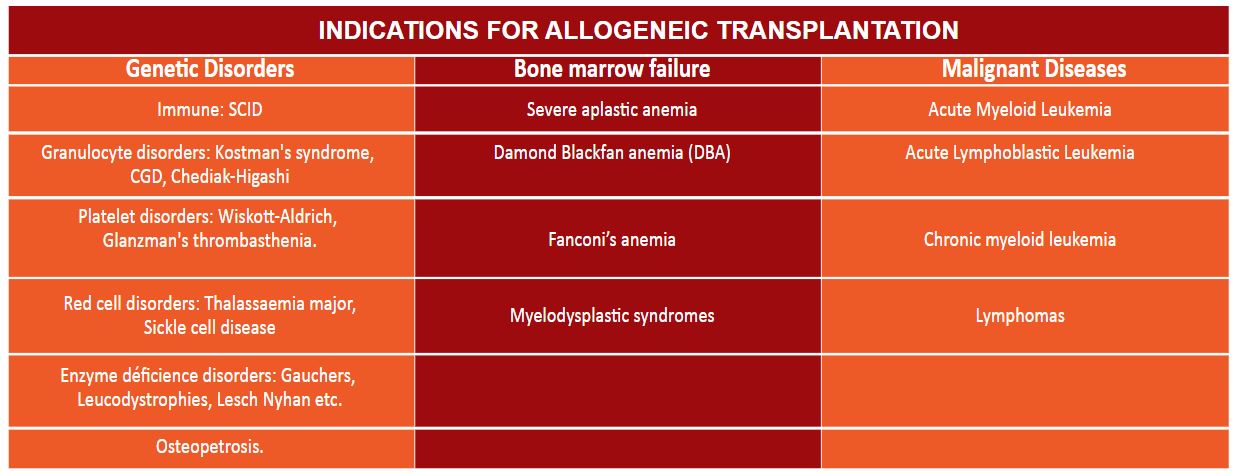——————————————————————————————————————————————————————
Story #27 of 50 days, 50 Stories Campaign
——————————————————————————————————————————————————————
INTRODUCTION
Hematopoietic Stem Cell Transplantation (HSCT) is widely used to treat various malignancies and a number of hematologic, immune, and genetic diseases. Worldwide the annual rate of allogeneic HSC transplants now exceeds 40,000. HSCT is an effective treatment for Acute Leukemias and Bone Marrow failure syndromes such as aplastic anemia and myelodysplastic syndromes. In thalassemia major, HSCT now provides a cost-effective alternative to transfusion/chelation therapy. Graft versus host disease, interstitial pneumonia, leukemic relapse, and infection remain the major complications
TYPES OF STEM CELL TRANSPLANT
Allogeneic
Allogeneic transplants are conducted, where the donor is a histocompatible sibling or family member (related) or from a donor registry (unrelated). Another source can be Umbilical cord blood, which is a rich source of Hematopoietic Stem Cells. The Bone Marrow and immune system of a patient who has an HLA-matched donor are destroyed (this is called conditioning) and the stem cells of the donor are harvested either from the Bone Marrow or the Peripheral Blood and transfused to reconstitute hematopoiesis.
Syngeneic
Syngenic transplants are conducted, where the donor is an identical sibling. These transplants are easier to perform because engraftment is faster and GVHD is rare and if present mild. However, relapse is much higher in syngeneic transplants for leukemia because there is no graft versus leuke

Autologous
Autologous transplants are conducted, where the patient acts as his own donor. Marrow must be free of tumors and the dose-limiting toxicity of chemotherapy is marrow suppression. The patient’s own Marrow or Peripheral Blood Stem Cells are harvested, cryopreserved, and then returned back after ablative chemotherapy. In some situations, the stem cell product can be treated (purging) with either drugs or monoclonal antibodies to remove any minimal tumour in the harvest.
GRAFT SOURCE
Bone marrow has traditionally been the graft source but an increasing number of transplants are being done with mobilized Peripheral Blood Stem Cells [PBSC]. However, because of the larger number of T-cells there is some increase in chronic graft versus host disease. The stem cells can be “pushed” into the peripheral blood using growth factors or a mobilizing agent called prelixafor and then collected using a Cell Separator. Alternatively, cyclophosphamide is given, and as the counts are rising there is an increased number of stem cells in the peripheral blood that can be harvested.
About DATRI:
DATRI is a Not-for-Profit organization founded in 2009 with a mission to save lives of those suffering from life-threatening Fatal blood disorders like Blood Cancer, Thalassemia, Leukemia, Aplastic Anemia, Sickle Cell Anaemia, etc.
DATRI is registered with the Government of India as a Section 8 organization, and all monetary contributions towards DATRI are subject to 80G exemptions

